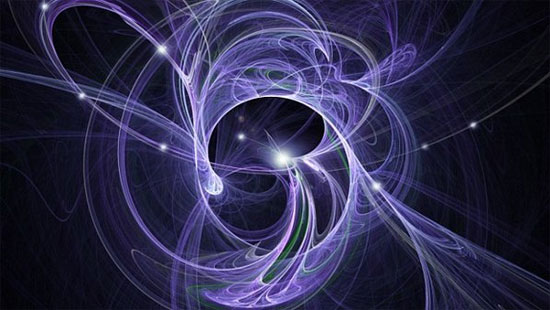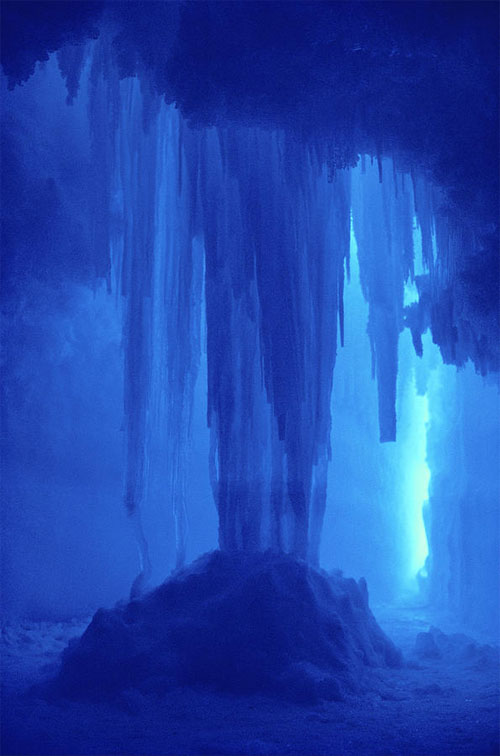Unexpected discovery of science in recent years
The discovery of ancient life at 12 meters below the surface of the south water, the existence of the Higgs, the smell of white . are the fascinating scientific discoveries of 2012.
1. The existence of the Higgs

Einstein with his theory of relativity laid the foundation for the development of quantum physics, leading people to find the origin of the universe: the Big Bang explosion 13.7 billion years ago. Quantum science is associated with many types of particles, small or large, with mass or no mass, electric charge or no charge. But it seems that all, stem from a basic particle : Quark . All the knowledge has not stopped there. Because even quarks cannot explain the mass of most visible matter in the universe, simply: every Proton and Neutron are formed by three Quarks, the mass of each Proton and Neutron exceeds the total volume of the constituent Quark particles. So where does that 'redundant' mass come from?
And the concept of a higgs or a god's particle is born. It is hoped that it can explain 99% of all "out-of-the-box" masses that exist in nature (meaning that 1% remains unclear). The Higgs if it exists will prove the existence of dark matter (thought to account for three-quarters of the matter in the universe).
On 4/72012, Fabiola Gianotti and Joseph Incandela, spokespersons for two independent experimental teams ATLAS and CMS presented their experimental results on the Higgs boson at the LHC. They found the Higgs boson with 99.99997% accuracy. "No Higgs - no volume, no volume - no you, me, or anything else", according to Jeffrey Kluger.
2. The discovery of ancient life at 12m below the surface of the south pole

Lake Vida is not like other lakes in the world. By simple one thing: it's in Antarctica. With an approximate salinity of the Dead Sea and a temperature of minus 10 degrees Celsius, Vida Lake in Antarctica is one of the harshest environments in the world. Recently, at a depth of 12 meters in the lake, people found bacteria and algae frozen, and they resurrected when the ice melted.
Moreover, at a depth of 18m (60 feet) after years of drilling, scientists have discovered traces of unknown bacteria. This proves that life can exist in previous conditions as inappropriate.
3. The smell of white

We can see white. We can hear white noise. But have you ever heard of white smell?
For the first time, scientists described what they were supposed to be a completely neutral scent, or "white olfactory" , by combining large amounts of odors together (meat, flowers, etc.). And surprisingly, the product is a perfectly balanced stream. It was named white odor (or laurax smell).
4. A planet is 13 times larger than Jupiter's size

Kappa Adromedae b is a very large planet, so big that one cannot put it in any category in the usual classification scale. 13 times the size of Jupiter, its orbit around a corresponding giant star is 2.5 times larger than our sun. The existence of this system proved that superstar stars have the ability to maintain around super-terrestrial planets.
5. The largest cosmic black hole ever discovered

The cosmic black hole, according to general relativity is a special structure of the universe, made up of a multitude of extremely large numbers of particles condensed in a space small enough, creating a gravitational field. so powerful that it can suck anything inside it, huge planets, even galaxies, even it absorbs even light rays. No light can escape, and perhaps that's why it is called a black hole. This gravitational field is strong enough to change a lot of theories about normal space and time in the universe as people know.
New in 2012, located 250 million light-years from Earth and has a mass of "17 billion times" our solar mass, the black hole at the center of the galaxy NGC 1277 , is the largest black hole in the universe discovered so far. However, it is interesting that it does not swallow nearby planets and stars like other black holes do.
6. Invisibility cloak

If you are a fan of Harry Porter, then what are you hoping for when you read here?
The first success , in 2009, the so-called invisibility cloak was built on the principle of bending light around an object to hide it. Researchers at Duke University did this by arranging a new layer of metamaterials into diamonds, successfully hiding a small cylinder from the naked eye. By 2010, the British scientists of the University of St. John Andrew in Scotland has found a material called 'Metaflex' that makes light move.
The second success , a research team from Cornell University, has successfully built the world's first invisibility cloak, making things invisible not only in space but also in time. Instead of bending the light to make the object invisible, physicists said the principle of operation was that they slowed down the light and suddenly accelerated it to create a space in which all Things seem to disappear. However, the current invisibility cloak is only effective in a very short time of one billionth of a second. The researchers said they could make the cloak work for 0.00012 seconds.
Hopefully, in the near future this time may be long enough for the invisibility cloak to become true.
7. Jurassic Park proved to be impossible to restore

Dinosaurs used to be the reigning ruler of the earth as humans at the time of 65 million years before they were extinct by meteorites and climate change. Many scientists still harbor the idea of being able to rely on the remains of DNA in fossils to clone and restore dinosaurs. Of course, that is an illusion.
Scientists discovered that DNA in the environment is broken quickly. They found that DNA had a half-life of about 521 years, in other words, after 521 years, half of the DNA would crumble. And of course, the last dinosaur died 65 million years ago, long enough for every hope to be hopeless.
8. The oldest galaxy ever discovered

Our universe, estimated to be formed around 13-14 billion years ago (13.7 billion years). After the Big Bang, it takes hundreds of millions, even billions of years, for space to fill itself with galaxies and cosmic clusters that we can observe today.
This newly discovered galaxy has an image of a red sphere, formed only 200 million years after the Big Bang, and can give us a clearer picture of the universe in its infancy. country.
9. Transplantation can improve the intelligent lice of monkeys

This is a great breakthrough of science. Researchers have designed to implant a brain electrical device to improve the monkey's thinking power, allowing it to solve complex puzzles in less time.
If anyone has ever seen the movie "Monkey Planet" then listen to this, please don't worry. Because perhaps, it must be very long, the results of this invention may be applicable.
- The death of Xom Den woman 3,500 years ago
- Unexpected findings shocked archaeological circles
- Explain the science of vampires
- The fantasy world of science is coming for Vietnamese children
- The role of women in science is increasing
- Questacon amazing science exhibition to Danang
- Unexpected guest on Discovery ship
- Can aliens live without water?
- Unexpected discovery of ancient Peruvian food 15,000 years ago
- Sitting under a tree of scientific research
- New discovery about the existence of Antarctic penguins
- Discover strange creatures footprints 310 million years ago
 'Fine laughs' - Scary and painful torture in ancient times
'Fine laughs' - Scary and painful torture in ancient times The sequence of numbers 142857 of the Egyptian pyramids is known as the strangest number in the world - Why?
The sequence of numbers 142857 of the Egyptian pyramids is known as the strangest number in the world - Why? History of the iron
History of the iron What is alum?
What is alum?